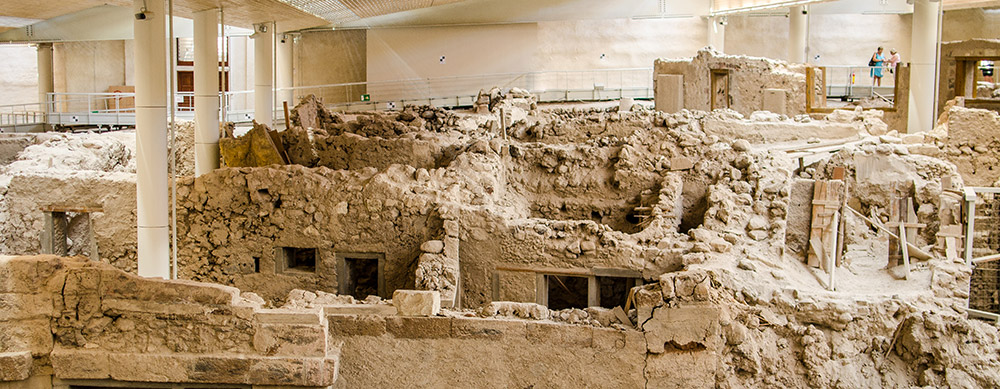Akrotiri Village Excavations
Description
Modern day Santorini has been shaped quite literally
by one event in ancient history.
In 1650 BC the huge volcano Thira erupted, sinking
the centre of the island then known as Strongyle and
leaving behind an incredible caldera.
And it is on that small, circular, remnant that Santorini
now sits, about 200 miles from the Greek mainland.
The municipality includes the inhabited islands of
Santorini and Therasia and the uninhabited ones of
Nea Kameni, Palea Kameni, Aspronisi and Christiana.
The soaring landscapes that give Santorini its unique
look were formed by the eruption and you will almost
certainly gaze in awe as you journey on a tender boat
to the port of Athina to head for Santorini’s most
important archaeological site, the village of Akrotiri.
On the way we make a brief stop at the ruins of the
island’s famous windmill and take in the wonderful
view.
The settlement of Akrotiri was destroyed in the
eruption and buried in volcanic ash which preserved
many of its buildings, structures and fine frescoes.
The site has been excavated since the 1960s.
You will find a place held in time and it is an incredible
experience.
It has been suggested Akrotiri could have been the
inspiration for Plato’s story of Atlantis, but there are
numerous other places vying for that honour.
After Akrotiri we head for the capital Fira, the island’s
largest town, to visit the Orthodox Metropolitan
Cathedral, also known as the Church of Ypapantis. It
is famed for its elegance and beautiful frescos painted
by Santorini artist Christoforus Assimis.
We have time to linger in Fira for shopping, a stroll
or a relaxing coffee before making our way back to
the tender boats by way of the teleferik, the Santorini
Cable Car. It’s an impressive descent of more than
200 metres to the blue waters of the caldera at the
harbour side.



